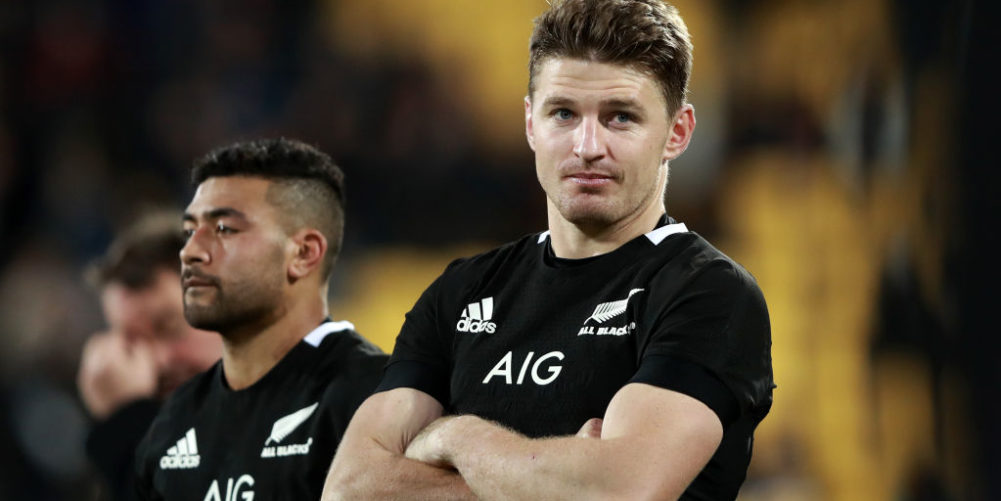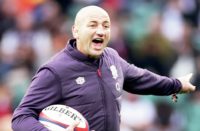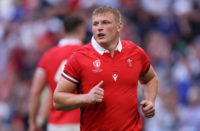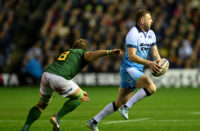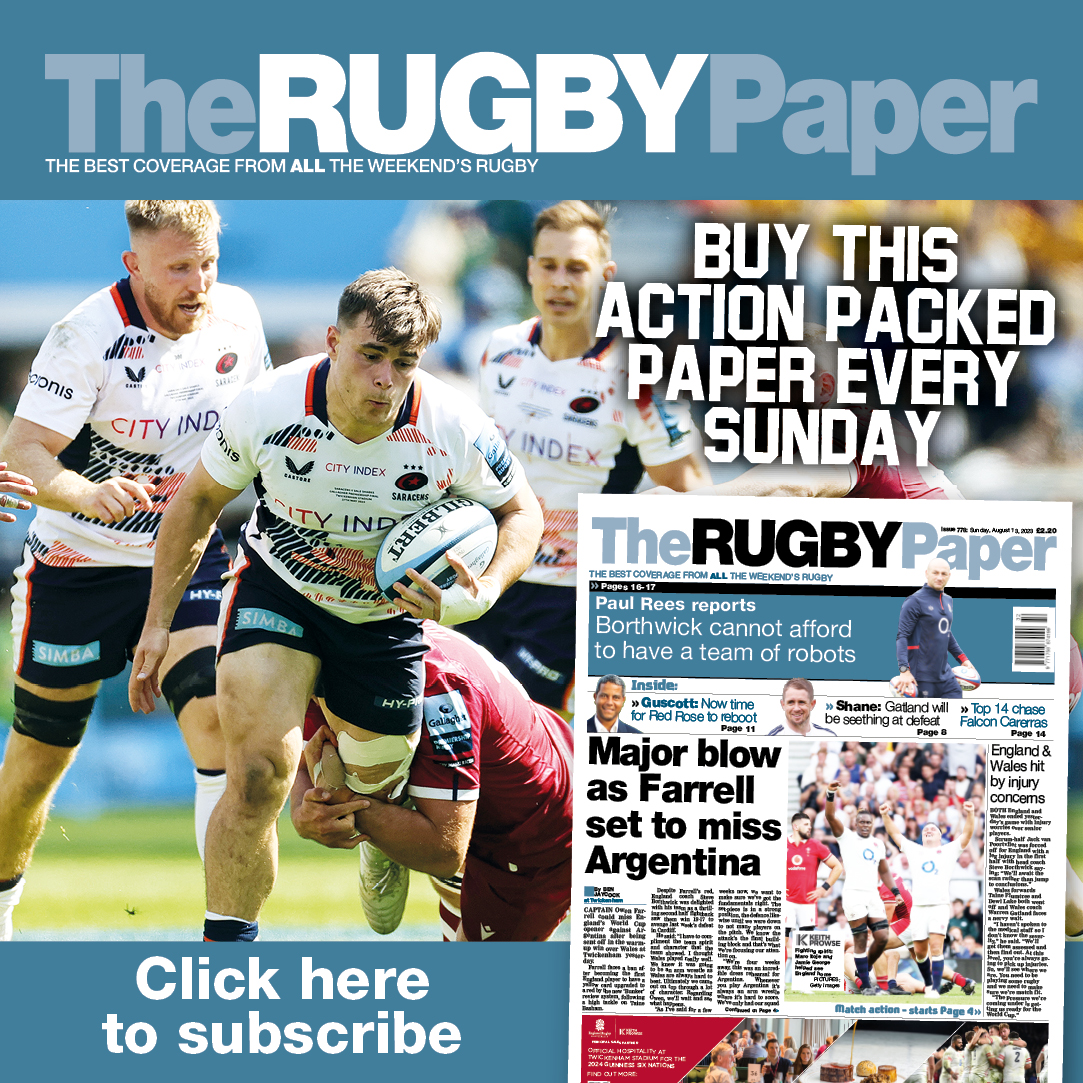THE most recent news from New Zealand has been about the appointment of Sam Cane as the new captain of the All Blacks, but, for me, the biggest decision coach Stu Foster will have to make is where to play Beauden Barrett.
Foster’s predecessor, Steve Hansen, made the mistake of playing it too safe at the 2019 World Cup by switching Barrett to full-back and putting Richie Mo’unga at fly-half. It was a big call, and in many ways a strange one, because Barrett is not only a brilliant player, but a world-class 10 – which is why he was twice named as World Rugby Player of the Year as a fly-half.
The main reason for the switch seemed to be that Hansen was concerned that Barrett’s goal-kicking was not reliable enough, and that Mo’unga had a far better strike rate. But when, during Hansen’s time as head coach, whether before or after the 2015 World Cup double, did New Zealand ever rely on penalties to win games?
They didn’t. Instead, New Zealand turned counter-attacking into an art, and usually relied on winning most games by two clear tries – and they did it with Barrett at 10. He and players like Damian McKenzie are very difficult to contain, especially when the pressure has been so great that the clearing kicks from the opposition are very often rushed.
There are changes in the All Black midfield after the World Cup, and Barrett is a highly decorated fly-half that others will follow, and while Mo’unga has won Super Rugby titles, he does not yet have the same international pedigree.
Foster’s dilemma is whether to bring back Barrett in his best position, which is clearly 10 – and where most teams would select him ahead of Mo’unga. That would mean that Mo’unga, whose form statistically at Crusaders is as good at the age of 25 as Dan Carter’s or Andrew Mehrtens’, would go back to the bench as Barrett’s understudy.
That would let the fly-half succession take its course in the same way that Barrett took over from Carter – and it is the option that I would take.
The alternative is that Foster backs Mo’unga as his fly-half through to the 2023 World Cup, and banks on Barrett being as effective at full-back as he is at 10 – or even using him as a super utility, because he has the talent to play anywhere in the backline.
Every team has to go through a rebuilding process, and New Zealand are no exception. The last big change-over for the All Blacks was when Richie McCaw, Dan Carter, Conrad Smith and Ma’a Nonu retired after the 2015 World Cup.
This time it is Kieran Read, Ben Smith, Sonny Bill Williams, Ryan Crotty and Owen Franks, who are stepping down, and each leaves a big gap to be filled.
Read will be missed because he took the captain’s baton and filled the gap left by his superstar Crusaders team-mates McCaw and Carter. The No.8 has definitely been added to the list of great All Black forward captains.
Ben Smith is one of the most complete rugby players ever to play, and was fantastic to watch whether he was on the wing or at full-back. Unfortunately, his last couple of seasons in the game were interrupted by trouble with concussion.
Sonny Bill Williams was a sporting superstar in New Zealand and Australia, but he was not always influential on the pitch – and in his last couple of seasons in Rugby Union he did not make the impact that he did in Australian Rugby League. He played mainly as a bench man for the All Blacks, often capitalising on the hard work done before he came on by Nonu and Conrad Smith.
Crotty was a very steady, durable, dependable centre, while any tight-head prop who wins over 100 caps for New Zealand, like Owen Franks did, deserves a place in the history books.
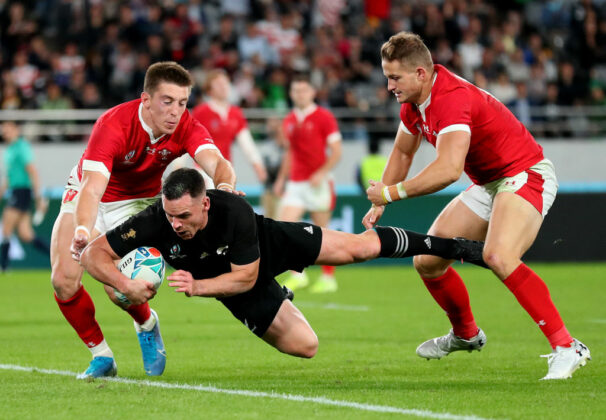
However, I don’t think this loss of experience and intellectual property is as valuable as when the 2015 crew stepped down, because the All Blacks did not have the same air of invincibility in 2019 that they had four years earlier.
The 2023 rebuild will be around Cane, and it was a big decision for Foster to make, especially as Brodie Retallick would get in everyone’s World XV. Retallick is one of the best forwards who has ever played the game, and his skill set is remarkable for a second row.
The qualities that coaches see in players vary, and Cane has been groomed for the leadership since 2013 when he made his debut as McCaw’s openside understudy. It would be wrong to call his selection a surprise, because he’s a bit of a machine.
However, after Ireland beat New Zealand in Chicago, some of the All Black tactics in the return match in Dublin came close to crossing the line – and Cane was one of those who could have been sent off. He was totally committed and destructive, but a little bit out of control.
What McCaw and Read had in common is that above all, they were clever, influential players. Also, even in their worst games they were 8/10. No-one gets selected for the All Blacks if they can’t defend, but both were also highly influential in attack, where they managed to make a difference out in the wide channels.
I’m not sure what Cane does in attack, but he is highly thought of because of the unseen work that his team-mates value so much, a bit like Richard Hill in the 2003 England side. What is clear is that he is very well respected to get in ahead of Retallick.
We know now that New Zealand are beatable – in fact, they are very beatable by the best teams, and we are not seeing any emerging superstars yet. New Zealand have to find a solution to producing another World Cup-winning cycle, and they have proved it is a problem they are pretty good at solving.
One of the first things Foster will have to do is find a new centre partnership, irrespective of whether it’s Barrett or Mo’unga at 10. One player who comes to mind is in Ngani Laumape, who is a very destructive runner, and could be a new Nonu.
Added to that the All Blacks have an overall skill set which is still well above their rivals, despite their World Cup semi-final defeat by England.
It is an interesting comparison that in England when we get a Kyle Sinckler we go mad, celebrating a prop who can run and pass. The difference is that all New Zealand props can run and pass, as well as do their jobs in the tight, because down there it’s expected rather than celebrated.
JEREMY GUSCOTT

